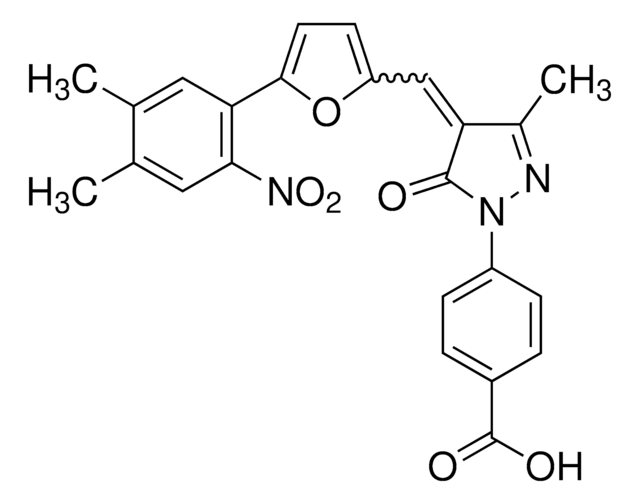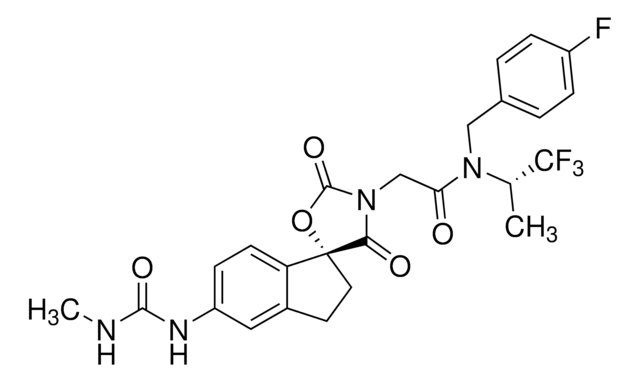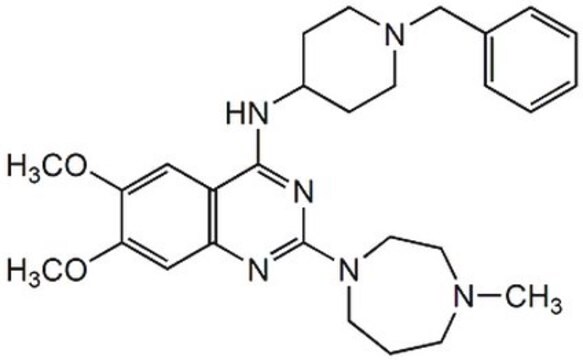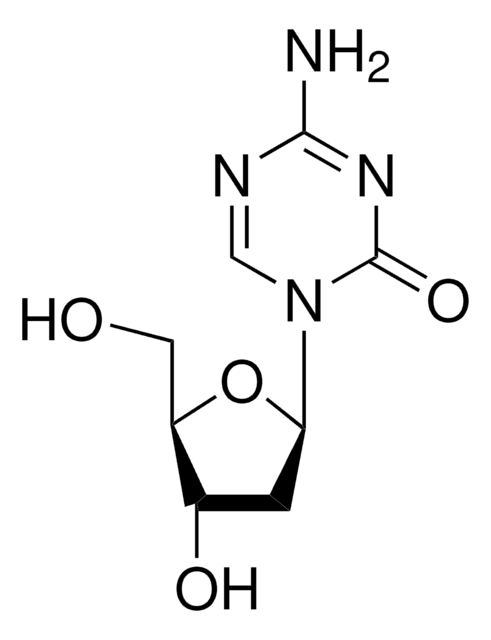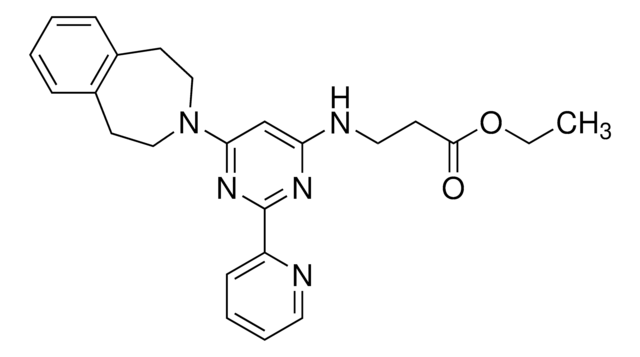382113
C646
≥99% (sum of isomers, HPLC), solid, histone acetyltransferase p300 inhibitor, Calbiochem®
Sinonimo/i:
Histone Acetyltransferase p300 Inhibitor, C646, 4-(4-{[5-(4,5-dimethyl-2-nitrophenyl)furan-2-yl]methylidene}-3-methyl-5-oxo-4,5-dihydro-1H-pyrazol-1-yl)benzoic acid, p300/CBP Inhibitor IV, Histone Acetyltransferase Inhibitor V, HAT Inhibitor V
About This Item
Prodotti consigliati
Nome del prodotto
Histone Acetyltransferase p300 Inhibitor, C646, Histone Acetyltransferase p300 Inhibitor, C646, CAS 328968-36-1, is a cell-permeable, reversible inhibitor of p300/CBP HAT (Ki = 400 nM). Competes with acetyl-CoA for the p300 Lys-CoA binding pocket.
Livello qualitativo
Saggio
≥99% (sum of isomers, HPLC)
Stato
solid
Produttore/marchio commerciale
Calbiochem®
Condizioni di stoccaggio
OK to freeze
protect from light
Colore
brick red
Solubilità
DMSO: 50 mg/mL
Condizioni di spedizione
ambient
Temperatura di conservazione
−20°C
InChI
1S/C24H19N3O6/c1-13-10-20(21(27(31)32)11-14(13)2)22-9-8-18(33-22)12-19-15(3)25-26(23(19)28)17-6-4-16(5-7-17)24(29)30/h4-12H,1-3H3,(H,29,30)/b19-12-
HEKJYZZSCQBJGB-UNOMPAQXSA-N
Descrizione generale
Confezionamento
Attenzione
Ricostituzione
Altre note
Note legali
Codice della classe di stoccaggio
11 - Combustible Solids
Classe di pericolosità dell'acqua (WGK)
WGK 3
Punto d’infiammabilità (°F)
Not applicable
Punto d’infiammabilità (°C)
Not applicable
Certificati d'analisi (COA)
Cerca il Certificati d'analisi (COA) digitando il numero di lotto/batch corrispondente. I numeri di lotto o di batch sono stampati sull'etichetta dei prodotti dopo la parola ‘Lotto’ o ‘Batch’.
Possiedi già questo prodotto?
I documenti relativi ai prodotti acquistati recentemente sono disponibili nell’Archivio dei documenti.
Il team dei nostri ricercatori vanta grande esperienza in tutte le aree della ricerca quali Life Science, scienza dei materiali, sintesi chimica, cromatografia, discipline analitiche, ecc..
Contatta l'Assistenza Tecnica.